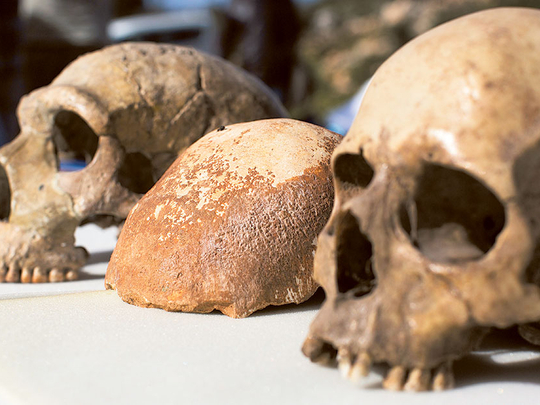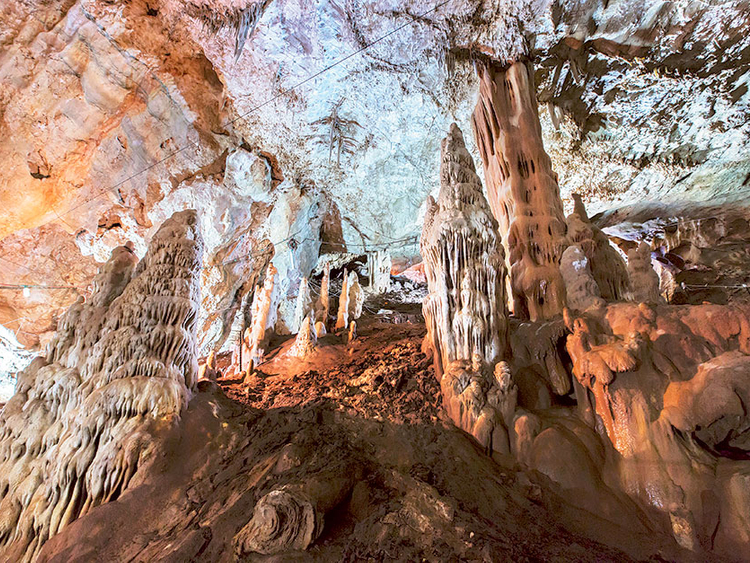
Paris: A 55,000-year-old partial skull found in the Middle East gives clues to when our ancestors left their African homeland, and strengthens theories that they cohabited with Neanderthals, scientists said Wednesday.
Found in Manot Cave in western Galilee, north Israel, the cranium has the characteristics of an early Homo sapiens, as anatomically modern humans are called, they said.
Manot is just a few dozen kilometres to the north and northwest of two other sites — the Kebara and Amud caves — where Neanderthal remains had been found.
Those relics were dated to between 50,000 and 65,000 years of age: in other words, humans from two species may have been contemporaries — possibly even neighbours.
“It has been suspected that modern man and Neanderthals were in the same place at the same time, but we didn’t have the physical evidence,” said Bruce Latimer, a palaeontologist at Case Western Reserve University in Ohio.
“Now we do have it, in the new fossil,” he added.
Neanderthals are an enigmatic branch of the human tree, whose fossils and bone tools have been found in Europe, the Middle East and Central Asia.
Their record peters out about 30,000 years ago — a strange ending that has triggered speculation that they were either wiped out by H. sapiens, the new and smarter hominid on the block, or that they disappeared because they interbred with us.
Once considered outlandish, the sex-with-Neanderthals theory has gained a lot of ground since 2010, thanks to analysis of DNA coaxed from Neanderthal bones.
This suggests that about two per cent of the genetic heritage of non-African humans today comes from Neanderthals. It is higher among Europeans, who may have up to around four per cent.
The new research shows it is clearly possible that Homo sapiens and Homo neanderthalis may have encountered one another, said Latimer.
“Both modern humans and Neanderthals contemporaneously inhabited the southern Levant, close in time to the likely interbreeding event with Neanderthals,” says the paper published in science journal Nature.
Until now, theories for interbreeding have suggested it took place much later, and in Europe.
The cranium, according to the scientists, may have belonged to an early H. sapiens coloniser — part of a wave out of Africa, the cradle of humanity, perhaps 60,000 years ago.
The rounded shape of the skull is clearly that of a modern human, but it also has a bony formation, called a bun, on the back that we do not — or no longer — have.
H. sapiens probably left Africa to benefit from a warm, damp climate in the Northern Sahara and Mediterranean, the study authors said.
After venturing into the Middle East, they forked west into Europe and east into South Asia, eventually conquering the entire planet.
“Recent evidence points to the arrival of anatomically modern humans in Europe as early as 45,000 years ago,” the paper adds.














